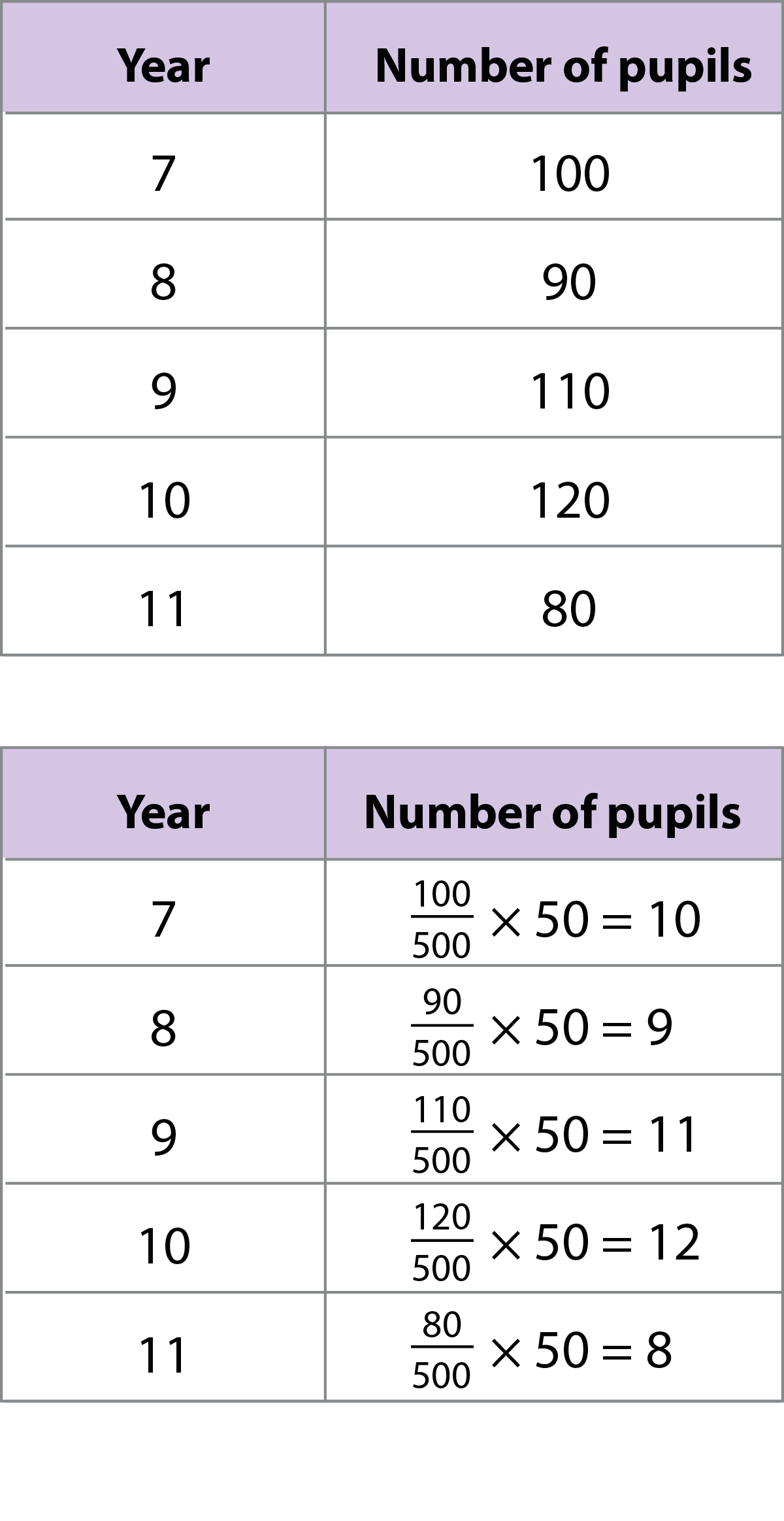stratified sample
This is the name given to a sample which contains many ‘layers’ of a population.
For example, we can select samples from different age groups. The size of the sample is proportional to the size of the layer, as this equation shows:

Here’s an example of a stratified sample.
There are 500 pupils in a school, and we need to ask 50 of them about their favourite food.
We must make sure that the survey is accurate, and therefore a range of pupils across the different school years is needed – these are the different ‘layers’.
The first table shows the number of pupils in each year.
Using the equation, we can calculate the size of the sample for each year.
-
• There are 100 pupils in Year 7, therefore this is the size of the layer.
• There are 500 pupils in the school, therefore this is the size of the population.
• Answers are needed from 50 pupils, therefore this is the size of the whole sample.
Therefore, the number of pupils in the sample for Year 7 is 10, as ![]() × 50 = 10.
× 50 = 10.
We use this equation to calculate the size of the sample for Years 8–11.

